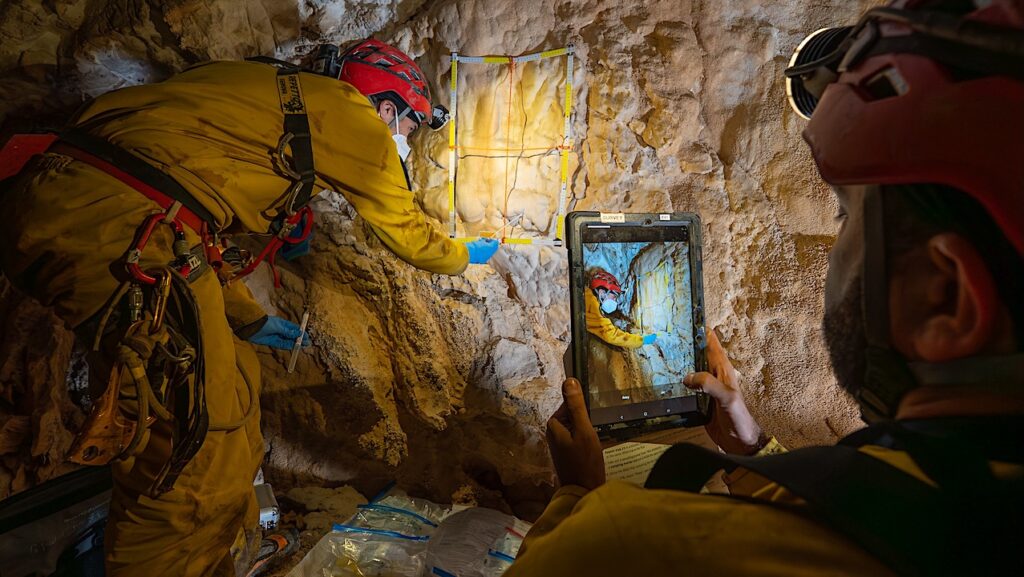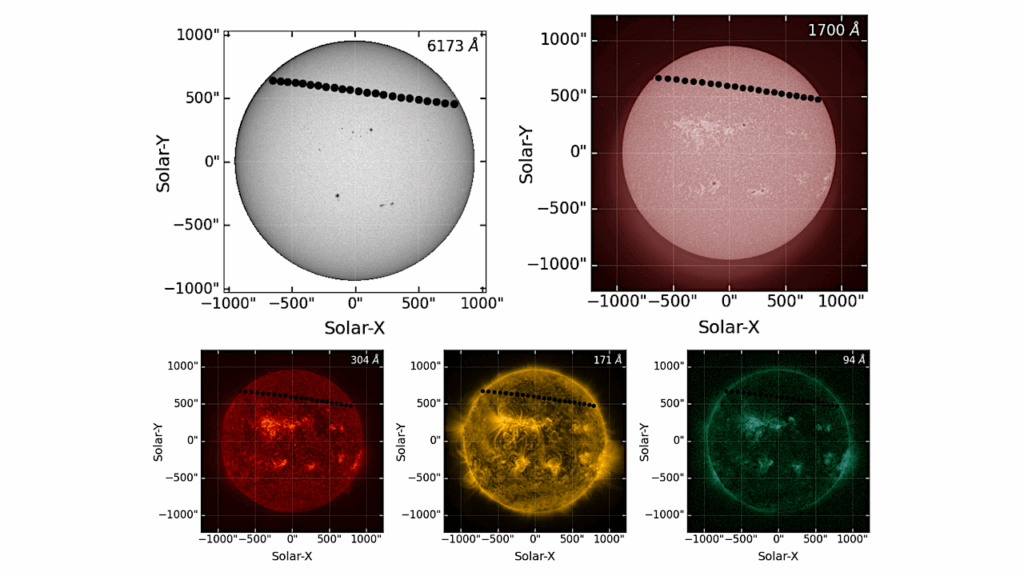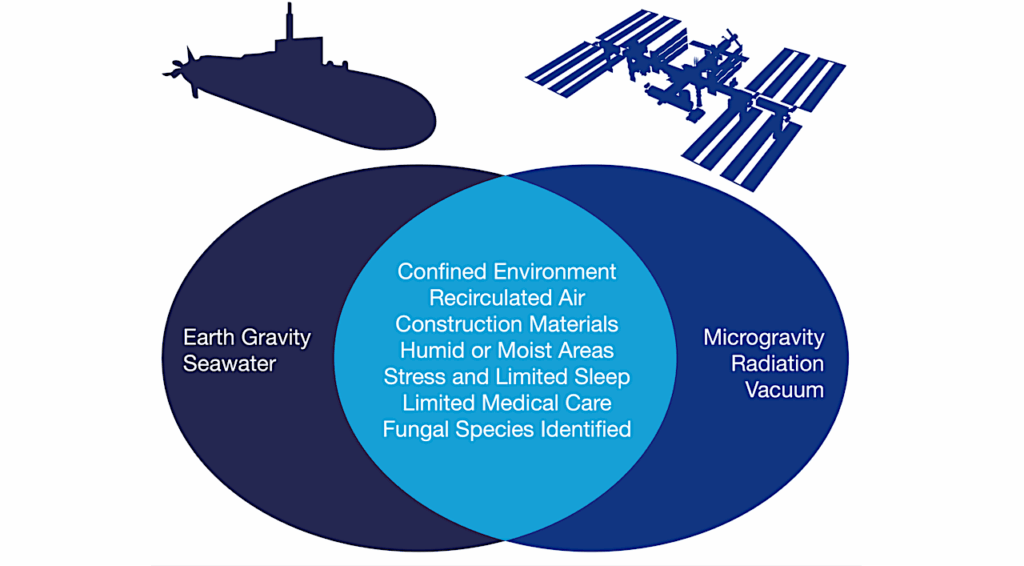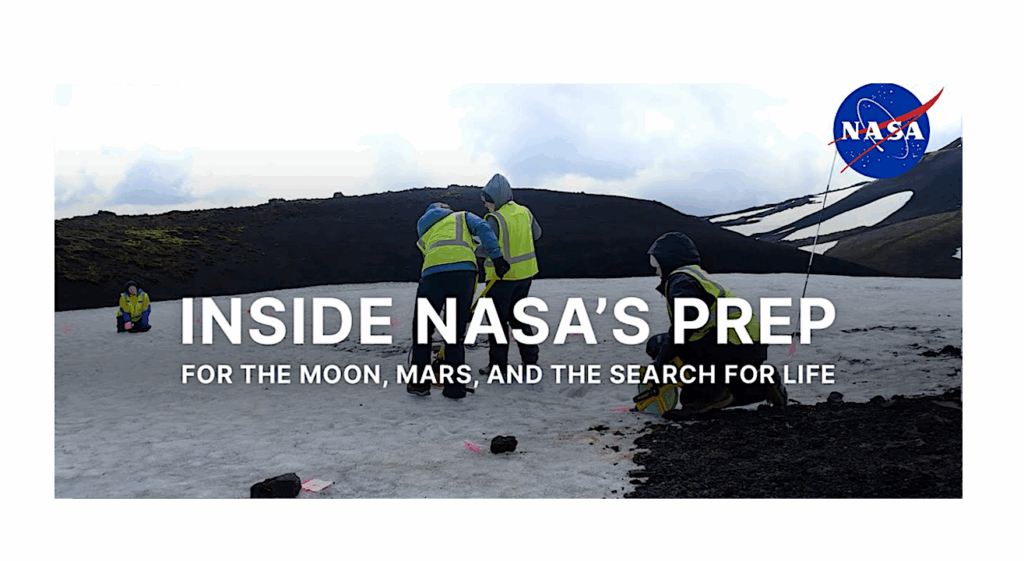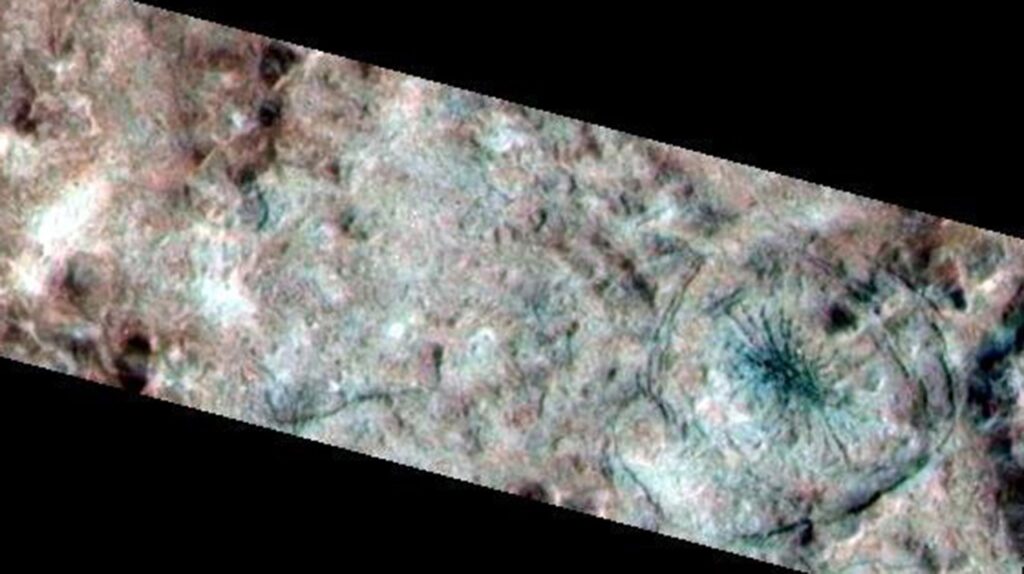Away Team Tech: In Situ Real-Time Monitoring for Aseptic Drilling
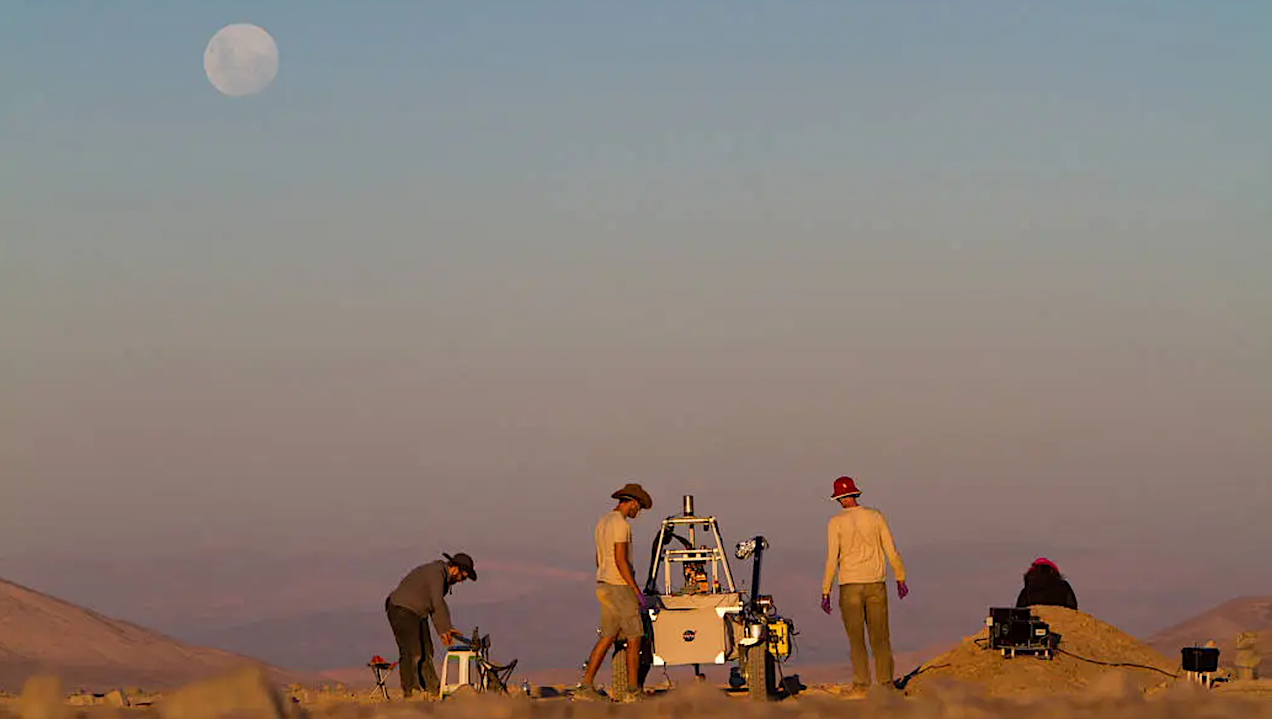
Lessons Learned from the Atacama Rover Astrobiology Drilling Studies Contamination Control Strategy and Implementation and Application to the Icebreaker Mars Life Detection Mission
ARADS drilled Mars-like materials in the Atacama Desert (Chile), one of the most life-diminished regions on Earth, where mitigating contamination transfer into life-detection instruments becomes critical. Our Contamination Control Strategy and Implementation (CCSI) for the Sample Handling and Transfer System (SHTS) hardware (drill, scoop and funnels) included out-of-simulation protocol testing (out-of-sim) for hardware decontamination and verification during the 6-Sol simulation (in-sim).
The most effective five-step decontamination combined safer-to-use sterilants (3%_hydrogen-peroxide-activated 5%_sodium-hypochlorite), and in situ real-time verification by adenosine triphosphate (ATP) and Signs of Life Detector (SOLID) Fluorescence Immunoassay for characterization hardware bioburden and airborne contaminants. The 20- to 40-min protocol enabled a 4-log bioburden reduction down to <0.1 fmoles ATP detection limit (funnels and drill) to 0.2-0.7 fmoles (scoop) of total ATP. The (post-cleaning) hardware background was 0.3 to 1-2 attomoles ATP/cm2 (cleanliness benchmark background values) equivalent to ca. 1-10 colony forming unit (CFU)/cm2.
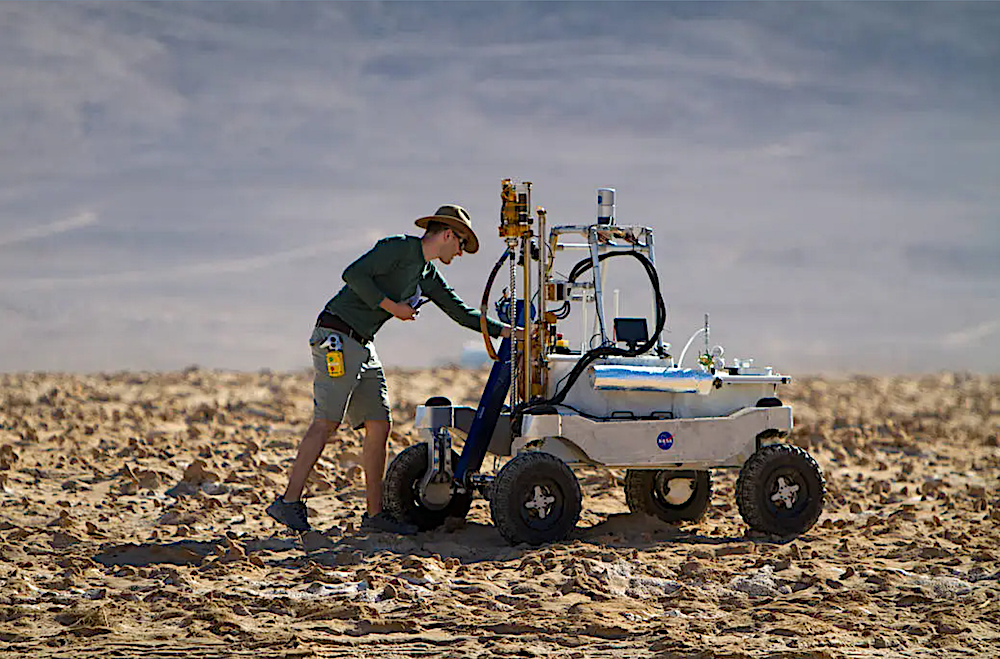
Engineer Dean Bergman works on the ARADS rover during recent field tests in Chile’s Atacama Desert. — NASA
Further, 60-100% of the in-sim hardware background was ≤3-4 bacterial cells/cm2, the threshold limit for Class <7 aseptic operations. Across the six Sols, the flux of airborne contaminants to the drill sites was ∼5 and ∼22 amoles ATP/(cm2·day), accounting for an unexpectedly high Fluorescence Intensity (FI) signal (FI: ∼6000) against aquatic cyanobacteria, but negligible anthropogenic contribution. The SOLID immunoassay also detected microorganisms from multiple habitats across the Atacama Desert (anoxic, alkaline/acidic microenvironments in halite fields, playas, and alluvial fans) in both airborne and post-cleaning hardware background.
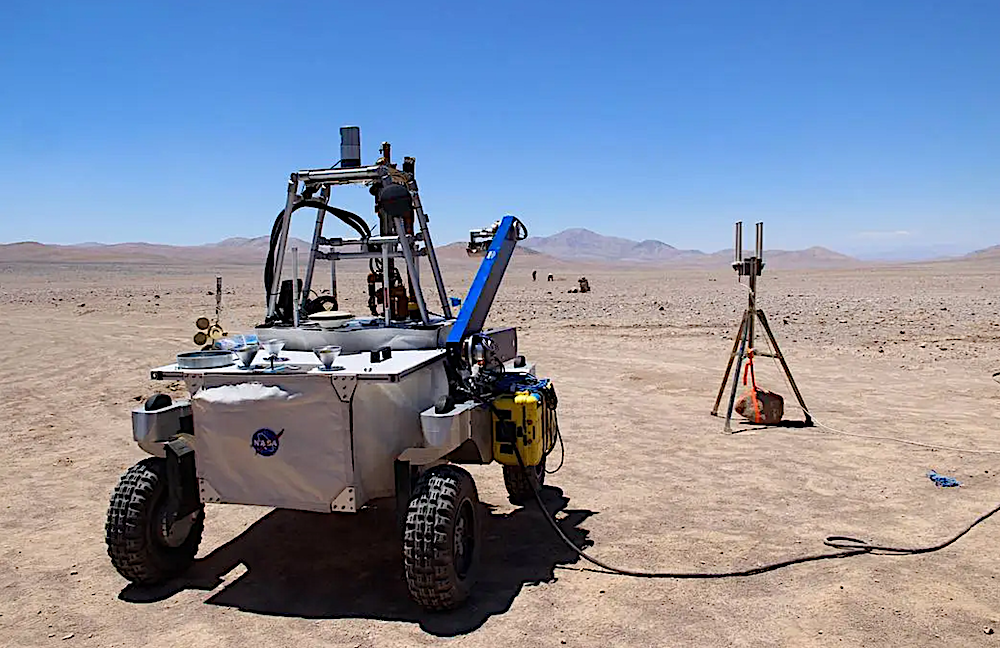
The battery-powered ARADS rover is plugged in for a recharge during field testing in Chile’s Atacama Desert — NASA
Finally, the hardware ATP background was 40-250 times lower than the ATP in cores. Similarly, the FI peaks (FImax) against the microbial taxa and molecular biomarkers detected in the post-cleaned hardware (FI: ∼1500-1600) were 5-10 times lower than biomarkers in drilled sediments, excluding significant interference with putative biomarker found in cores. Similar protocols enable the acquisition of contamination-free materials for ultra-sensitive instruments analysis and the integrity of scientific results. Their application can augment our scientific knowledge of the distribution of cryptic life on Mars-like grounds and support life-detection robotic and human-operated missions to Mars.
https://pubmed.ncbi.nlm.nih.gov/38133823/
https://www.liebertpub.com/doi/10.1089/ast.2022.0133
Astrobiology



